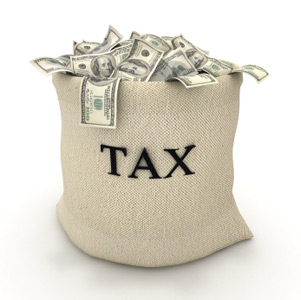EPAct – 179D Incentives
 The Energy Policy Act of 2005 (“EPAct”) enacted Section 179D which provides for a special tax incentive for qualified energy efficiency projects incorporated into commercial buildings.
The Energy Policy Act of 2005 (“EPAct”) enacted Section 179D which provides for a special tax incentive for qualified energy efficiency projects incorporated into commercial buildings.
Since 2005, literally hundreds of millions of dollars have been received by businesses, architects, engineers and contractors from this incentive program. However, few companies actively participate in the 179D incentive program. Why?
- Low awareness.
- Perceived complexity.
- Inertia.
The requirement for a Section 179D study by qualified engineering and tax professionals can create a perceived barrier to action. Your knowledge of the program and an ability to execute on that knowledge can improve your bottom line.
Why Use Claris Energy?
Claris Energy provides a turnkey service to help you secure your Section 179D tax incentive. We provide the independent, third-party reports required by the IRS and we do it in a way that reduces the administrative burden on you so you can focus on your business.
We perform a complete Section 179D study in accordance with the IRS guidelines including:
- Calculation and documentation of the amount of the deduction.
- Performance of the energy modeling required to certify the project.
- Delivery of a certification report and the required IRS documentation.
- Assistance with obtaining the Allocation Letter from the proper government or public entity official.
- Coordination with your tax advisor or independent accounting firm to ensure that you receive the maximum benefit under the Section 179D incentive program.
We can also assist you with pre-screening potential projects to ensure they qualify for the incentive.
Call us today to learn if your new building or energy efficiency upgrade qualifies for this valuable incentive.

Section 179D - The Basics
The following information provides more detail about this important tax incentive for energy efficient commercial building projects:
Section 179D provides for the immediate expensing of $0.30 to $1.80 per square foot for qualifying energy efficiency projects including: a) lighting, b) building envelope and c) HVAC systems. This provides an immediate tax benefit to building owners who must otherwise deduct these costs over 39 years. The tax incentive can be claimed by a building owner, tenant or ESCO, depending on who pays for and owns the equipment.
It is important to remember that the tax benefit applies to new construction as well as energy efficiency upgrades to existing facilities and that it applies to all projects completed and placed in service from January 1, 2006 to December 31, 2013.
The amount of the deduction is determined by the efficiency measure installed and the amount of the energy savings compared to a reference building based on ASHRAE Standard 90.1-2001. The maximum deduction is $1.80 per sq. ft. for lighting, building envelope and HVAC systems that, in combination, reduce the entire building’s energy costs by 50% or more compared to the Standard 90.1-2001 reference building.
Partial Deductions for Specific Measures
Partial deductions are allowed for each of the following individual subsystems that meet a lower standard:
- Interior lighting
- Building envelope
- HVAC and hot water systems
In order to claim the deduction, a Section 179D compliance study must be performed and the energy savings must be certified by a licensed engineer or contractor in the jurisdiction where the building is located.
An important feature of the 179D incentive is that it can be claimed by building owners retroactively for projects placed in service beginning in 2006. Amended returns can be filed for open tax years (generally 3 years from the date of filing) and the IRS has provided for special procedures to claim the incentive for closed tax years.
Special Rules For Government Owned Buildings
Since public entities do not pay taxes, the tax incentive attributable to the project is passed through to the “Designer” of the energy efficiency upgrades for any “Government Facility.” A Government Facility includes any building owned by a Federal, State or local public entity including: schools, post offices, airports, military bases, court houses, public universities, town halls, libraries, police departments, fire houses, etc.
A Designer includes any architect, engineer or contractor that that helps create the technical specifications of the project. If multiple parties contribute to the design of the facility, the incentive can be allocated among the parties in any way the parties agree that is representative of their relative contribution to the project’s design.
The government entity must give the Designer an “Allocation Letter” – a written declaration of the amount and allocation of the deduction. The Designer’s tax incentive may also be claimed retroactively for all qualifying projects that were completed within "open" tax years.

Interim Lighting Rules
Interim lighting rules were adopted to encourage building owners to focus on lighting projects which are easily measured and perceived to have a high impact on building energy efficiency.
Lighting systems (except warehouses) that reduce lighting power density (LPD) by 40% qualify for the full $0.60 incentive. Lighting systems (except warehouses) that reduce LPD by 25% qualify for a $0.30 incentive. LPD improvements between 25% and 40% are prorated in accordance with IRS Notice 2006-52. Warehouse lighting systems must reduce LPD by 50% to qualify for the $0.60 deduction (with no proration below 50%).
Reductions in LPD are based on the minimum requirements in ASHRAE Standard 90.1-2001’s Table 9.3.1.1 (building area method) or Table 9.3.1.2 (space-by-space method), not including additional interior lighting power allowances. Bi-level switching must be installed in all occupancies except hotel and motel guest rooms, store rooms, restrooms and public lobbies. Additionally, controls and circuiting (i.e. automatic lighting shutoff) must comply fully with the mandatory and prescriptive requirements of ASHRAE Standard 90.1-2001. Finally, the system must meet the minimum requirements for calculated light levels as established in 9th Edition of the IES Lighting Handbook.
If you would like to learn more about the tax incentive for Energy Efficient Commercial Buildings, please contact:
Mr. Steve Nanos
Tel: 609.306.1326
Email: steve.nanos@clarisenergy.com





